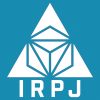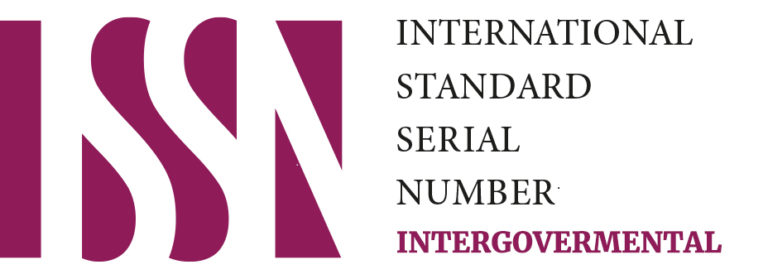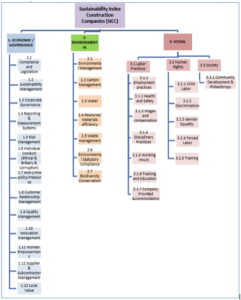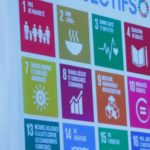ABSTRACT
The construction industry’s significance escalates due to its contribution to the economy’s overall GDP. However, the detrimental effect it imposes on the environment also contributes to the environment’s overall degradation. Although the efforts have been instigated to protect the environment, the construction process’s activities continue to thwart the environment. One such aspect recognized in the research is the sustainability index, which helps align the construction processes with environmental sustainability efforts. This research assessed the UAE construction sector and its role in deploying the sustainability index in project management.
The UAE construction sector is substantially advancing in terms of its awareness of sustainability practices and green culture. It emphasizes the formation and use of the provided model focused on environmental, social, and economic factors to ensure the companies’ sustainability compliance in the construction sectors. This model helps in bridging the gap related to the UAE government’s sustainable construction practices.
INTRODUCTION
At present, the world’s inclination to the green movement has considerably grown, given the upsurge in scientific research and the destruction of natural environments globally.1 Research has also enlightened that Sustainability practiced awareness has increased to reduce the detrimental impact on the earth, leading to an adverse effect on individual health. The most significant effect that is related to the green movement is the construction sector. Globally, the construction sector is identified as one of the main contributors to the country’s economy.2 The recent findings of Goubran noted that the construction sector helps in attaining the country’s social and economic goals at both domestic and national levels.3 It also helps to develop the infrastructure that allows the projects to perform their intended function. Concerning the financial aspect, the sector is observed to contribute to GDP growth (gross domestic product), which helps stimulate the country’s development and employment.4
However, some of the empirical studies have argued that there is a negative impact of the sector on the environment, noted that more than 3 billion tons of raw materials are used in the industry, where 40 percent is invested in the manufacturing of the constriction material in the overall global economy.5 Not only this, but the sector is also responsible for deriving 50 percent of the total material resource from the natural habitat, with energy consumption of 40 percent and 50 percent of the overall generated waste.6
Sustainability’s recent recognition has prompted the construction sector to adopt more sustainable practices, which help protect the environment, improve society, and grow the economy.7 This has led to the instigation of global efforts, where different indices are being developed for sustainable performance measurement. Moreover, the sustainability goals issues by the U.N. have prompted the countries to increase the efforts. Given this, the current study also analyzes the sustainable measure concerning the construction sector in the UAE.
The research is significant as the outcomes achieved in it are likely to help develop improved work practices in the construction sector. The findings reached would help policymakers devise techniques that foster socio-economic progress by providing enhanced work practices, which promote the country’s socio-economic development by using sustainable practices to develop better work practices.8
The implication resulting from this is that the construction sector substantially impacts the economy’s competitiveness. Such as the use of the UAE’s sustainability index is likely to help determine the Degree of compelling the foreign direct investment from the different countries across the world by improved infrastructure, which various studies have signified as the prime attractive feature for the investment the foreign investors.9 This is increasingly significant for the primary countries, given their efforts to diversify their economy and develop a new revenue source other than oil. The sustainability index would enable a reduction in activities leading to ineffective use of resources, leading to land degradation, water pollution, and natural habitat loss.10
METHOD OF DEVELOPING THE SUSTAINABILITY INDEX
In order to develop a comprehensive sustainability index, quantitative and qualitative data were collected from two primary sources:
a) Literature review: Quantitative and qualitative data were collected from published literature in the region and documents posted by the United Nations related to the sustainable development goals (SDGs) and the Global reporting initiative organization (GRI) related to the companies’ performance.
As a construction expert, I used my background to evaluate the sustainable practices mentioned in various related literature and aligned with the SDGs and the GRI reporting to build the questionnaire and make it ready for the interviews.
b) In-depth interview: The research aims to validate and enrich the data by collecting qualitative data via in-depth interviews with defined questions. This questionnaire was presented to experts in the construction industries who worked with various stakeholders such as the government and private sectors, from the client representative to project management consultancy to the engineering and contractors side. The interview target participants were engineers involved in the contractors’ evaluation and selection decision-makers and those involved in specifying the technical requirement for the builders’ evaluation and selection.
Based on these interviews’ data, the sustainability index was built and sent to the most experienced people who participated in the initial consultation to validate the Index; the participants have their feedback on the proposed Index. The research participants came from diverse backgrounds. The roles of some of the participants include:
- Members of project management consultancy firm. The participant with minimum experience in this category had 20 years of project management experience, including building contractors.
- Members of engineering firms. The participants have an average experience of 25 years in developing technical requirements and contractors’ evaluation processes.
- Members of contractors firms. The participants have an average experience of 20 years in the construction field, building notable projects in the UAE market.
DEVELOPING A SUSTAINABILITY INDEX FOR SELECTION OF CONSTRUCTION COMPANIES
Sustainable development is essential for building design and construction to sustain the construction sector and protect the environment. This study aims to develop a model to produce a sustainability index that allows construction companies to be rated and ranked. The sustainability index model will be significant for the use of a multi-dimensional approach in contractors’ evaluation. The Index will allow the Clients, Developers, and the Construction industry to evaluate the contractors’ sustainability performance and rating them according to the Index score.
Following this sustainability index concept, a higher score will be given to the best sustainability performance. The evaluation may be considered a continuous activity as evaluation feedback loops can occur in different stages, providing further information to define criteria to satisfy the ultimate objectives.
The construction industry’s Sustainability Index model is developed based on multiple dimensional concepts that encompass the economic, environmental, and social factors.11 Those factors were developed in line with the U.N. Sustainability Development Goals (SDGs) and the Global Reporting Initiative (GRI) standard.
The Sustainability Index for Construction Company (SICC) will provide the UAE construction market with an excellent tool to rate the contractors’ sustainability performance working in the market.
The sustainability index consists of three main assessment dimensions: Economic/Governance, Environmental, and Social, with 33 indicators and 146 related questions.
- The Economic/Governance dimension includes the following indicators: 1.1 Compliance and Legislation, 1.2 Sustainability Management, 1.3 Corporate Governance, 1.4 Reporting & Measurement Systems, 1.5 Risk Management, 1.6 Individual Conduct (Ethical & Bribery & Corruption), 1.7 Anti-crime policy/measures, 1.8 Customer Relationship Management, 1.9 Quality Management, 1.10 Innovation management, 1.11 Women Empowerment, 1.12 Supplier & Subcontractor Management, and 1.13 Local Value; and there are 69 specific related questions.
- The Environmental dimension includes the following indicators: 2.1 Environmental Management, 2.2 Carbon Management, 2.3 Water, 2.4 Resource/Materials efficiency, 2.5 Waste management, 2.6 Environmental Statutory Compliance, and 2.7 Biodiversity Conservation; and there are 26 specific related questions.
- The Social dimension includes the following indicators: 3.1 Labor Practices, 3.1.1 Employment practices, 3.1.2 Health and Safety, 3.1.3 Wages and compensation, 3.1.4 Disciplinary Practices, 3.1.5 Working Hours, 3.1.6 Training and Education, 3.1.7 Company Provided Accommodation, 3.2 Human Rights, 3.2.1 Child Labor, 3.2.2 Discrimination, 3.2.3 Gender Equality, 3.2.4 Forced Labor, 3.2.5 Training, 3.3 Society, and 3.3.1 Community Development & Philanthropy; and there are 51 specific related questions.
Calculating a company’s final sustainability scores is a process of applying points that are weighted and summed until a final score is reached. The starting point consists of individual questions with a weighted value, summed into areas called an indicator. Similarly, indicator values are weighted, summed into even broader areas called dimensions. Following the same pattern, dimensions values are then weighted and summed to find a maximum sustainability score for each organization.
The Index is designed to ensure objectivity and uses predefined questions. Each potential answer is assigned three points; 0% for the unavailable practices, 50% for the in-progress practices, and 100% for the available practices. Companies should provide adequate supporting material for each question to receive the question’s maximum score.
Contractors’ assessment and selection involve complex decisions, and the increased significance of sustainable issues has further complicated the decision situation. Social is concerned with economic growth and the long-term effects on the employees’ living standards at both present and future generations. Indeed, sustainable development is an essential issue in contractor evaluation and selection. The development of the model is a way to address multiple criteria concerning contractors’ selection decision-making. Using a sustainability index will significantly enhance the assessment of sustainability issues generated by construction activity, realize sustainable development goals, and make a positive contribution to identifying a sustainable contractor. The sustainability index model was developed based on multiple dimensional concepts encompassing socio-economic and environmental factors in the evaluation process.
CONCLUSION
The findings show a need to integrate the economic, environmental, and social factors for ensuring sustainable practices. The primary purpose of consistency is to assess the procedures and proposes inspired plans to ensure consistency.12 This assessment showed that Sustainability is recently connected to project management. Nowadays, there is an increased knowledge required to create techniques and devices to incorporate the sustainability standard with the project’s portfolio management. This study highlighted sustainability standards, consisting of economic, social, and environmental standards, significant in construction.
This research initially contributes a lot in construction by suggesting a technique to calculate the construction’s business projects’ Sustainability. This research gives decision-makers a simple way to interpret the instrument to evaluate the business projects’ Sustainability. The sustainability assessments need to be carried out while choosing the projects and determining financial resources.
The general conclusion of this research outlines the fact: expertise, internal ability, and the outside forces, including market and societies, are the basis of organizations’ real progress to the system of sustainable management so that required changes can be made. An opportunity is given to the companies by an integrated management system focusing on Sustainability to develop their operations. There must be effective communication and cooperation alongside stakeholders, which would be beneficial for the company. 13
Middles East countries have proved that they can deal with any kind of challenge. They can deal with human-made and natural challenges and make them sustainable in the built environment industry. However, this concept is still new for many countries, tremendous progress is seen in many Arab countries, and they made many developments in government and the private sector. But still, there is more to be done in the area of development. Regarding the streamlined Sustainability within the development operations, the region has to make more efforts and raise awareness.14
However, this program’s hindrance is that every state is making an effort to develop its system, although the countries included in this region are divided into two groups. It has been seen that different areas of the same country have various regulations and procedures for building permits; it is also observed that unified green building code implementation is not practically done.15 The Middle East countries should reformate the green building codes that consistently impact water, energy, and the environment. Similarly, if the region follows sustainable development, then increases in awareness and minimization in overconsumption create a critical, sustainable region.16
According to the study, the organization’s sustainable system’s influence through respondents involves financial cost reduction, lessee demand, maximizing property value, company reputation, codes and regulations, personal beliefs, and environmental interest. The sustainable system’s cost-saving feature is well developed and acknowledged because of reducing water and energy consumption. A sustainable system can also increase the value of property in the market. Moreover, lessee demand is significantly high in the sustainable system because they offer a high-quality environment and minimum operational costs. A sustainable system also boosts an organization’s reputation, bringing profit to the organization as customers become more environmentally conscious. A sustainable system makes sure that the organization complies with governmental issues and building codes, which can minimize the liability.17
Implementing the proposed Index will lead companies to sustain their business and benefit from being sustainable and sustaining the country’s economy where they operate. Complying with these sustainable dimensions will lead the companies to:
- Economic dimension: will lead the companies to increase their profit, perform ethically, transparency of their reporting activities, boosts the organization’s reputation, empowering the qualified employees, and invest in innovative construction technology. Eventually, all this will secure a concrete place in the construction market and grow its business.
- Environmental dimension: will lead the companies to reduce their carbon footprint and energy consumption, reduce their water footprint, use natural resources efficiently, enhance the circular economy approach by using recycled content materials, and reduce their construction waste. Eventually, all these practices will help the companies reduce their environmental footprint and help the country achieve sustainability targets that they have aligned with the U.N. SDGs.
- Social dimension: It will help enhance the employees’ social life and enhance the community by supporting the local business and improving project management efficiency and corporate social.
RECOMMENDATIONS
Tailoring a framework would be suggested by the researcher who aims for setting systematic processes so that sustainable construction management practice can be successfully implemented in UAE and seven pillars outline as:
- First is the sustainability goals, which are optimized and prioritized in the UAE’s construction market. Via the development of Sustainability’s particular policies, these goals can be achieved for the corporations of construction and the sake of projects. There must be the imposition of sustainable rules so that sustainable construction management’s different aspects can be organized on a unified model. For the development of marketplace dominance’s ego-centered trend, there would be an alignment of the target, to achieve the highest advantages of economy, alongside more sustainability goals.
- Second is relevant legislation adoption, imposing Sustainability and sustainable practices in products and construction, via increasing UAE municipalities’ code about green buildings. For containing clear credit’s record of the register of points for the classification of sustainability incorporation’s level in construction projects, then for better responsibility, there is the creation of incentive and a disciplinary mechanism regarding applying project requirements’ sustainable schedule and specifications.
- The third is the merger of Sustainability tools and practices, alongside the construction project’s management, via protruding them into the organization’s corporate level and project management process’s lifecycle, including initiation, plan, implementation, control, and closure of a project. It is attainable via the creation of sustainable practices’ binder and schedule and mapping to projects’ phases, considering sustainable and environmental facets in project decisions’ and actions’ any course and count.18
- The Fourth is that there must be proper development of knowledge management among stakeholders. They must be introduced to sustainable construction management and sustainability practices, increasing awareness and adoption levels from employers and clients. After that, lifting the engaged professionals’ skills, including employees and managers of the projects, leads to greater attachment to sustainable construction management and Sustainability in the UAE’s market of construction.19
- The fifth is the human factor is the stakeholder, who drives the construction process, which includes Sustainability. There would be a direct impact on the end product and sustainable management process. This factor leads to negativity or positivity, which depends on the communication and engagement level’s situation resulting in their needs’ management and impact control and strengthening internal stakeholders’ skills, which powerfully lead to successful sustainable management practices in the UAE’s construction field.
- The Sixth is that there must be an internal control mechanism that ensures sustainable management practice’s proper implementation. A mechanism drives the asserting processes of implementation and leads to early correction measures for any deviation. A quarter of reviews help in implying sustainable tools and consequences at the director level’s corporate and board. Also, sustainable management processes’ monthly reporting and reviewing and output at the level of the project so that proper evaluation and incorporation can be guaranteed, which leads to the ensured advantages and revenues towards the project, personnel, and company.
- The Seventh is that the course of corrective measures are initiated, and sustainable tools are piloted. By continuous learning and collecting feedback from workers and stakeholders, employed processes can be improved.
REFERENCES
1. Monia N. Gharzeldeen and Salwa M. Beheiry, “Investigating the use of green design parameters in UAE construction projects,” International Journal of Sustainable Engineering 8, no. 2 (2015): 93-101.
2. Gary Paul Green and Anna Haines, Asset building & community development (Sage publications, 2015).
3. Sherif Goubran, “On the Role of Construction in Achieving the SDGs,” Journal of Sustainability Research 1, no. 2 (October 30, 2019): 1-52.
4. Goubran, 2019.
5. Ameh Oko John and Daniel Emmanuel Itodo, “Professionals’ Views of Material Wastage on Construction Sites and Cost Overruns,” Organization, Technology & Management in Construction: An International Journal 5, no. 1 (n.d.): 747–757.
6. Goubran, 2019.
7. Jan Bebbington and Jeffrey Unerman, “Achieving the United Nations Sustainable Development Goals: An Enabling Role for Accounting Research,” Accounting, Auditing & Accountability Journal 31, no. 1 (January 1, 2018): 2–24.
8. Sreejith Balasubramanian and Vinaya Shukla, “Green supply chain management: the case of the construction sector in the United Arab Emirates (UAE),” Production Planning & Control 28, no. 14 (2017): 1116-1138.
9. H. Taleb and Y. Al-Saleh, “Achieving bankable green deals in the commercial sectors of emerging economies: the case of shopping malls in the United Arab Emirates,” WIT Transactions on Ecology and the Environment 193 (2015): 977-983.
10. Vivian WY Tam, Khoa N. Le, Cuong NN Tran, Xiangyu Wang, and Jiayuan Wang, “A review of international green building designs,” International Journal of Construction Project Management 9, no. 1 (2017): 3-18.
11. Zhonghua Gou and Xiaohuan Xie, “Evolving green building: triple bottom line or regenerative design?” Journal of Cleaner Production 153 (2017): 600-607.
11. Mohammad Asif, Searcy Cory, Zutshi Ambika, Ahmad Naiz, “An integrated management system approach to corporate sustainability,” Europen Business Review. Vol 23 no 4. (2011). 353-367.
12. Craig W. Furneaux, Keith D. Hampson, Peter Scuderi, and Stephen L. Kajewski, “Australian construction industry KPIs,” In CIB World Congress Proceedings–Building a Better World, CIB, (2010): 1-12.
13. Asif et al., 2011.
14. Afolabi A. Dania, “Sustainable Construction at the Firm Level: Case Studies from Nigeria” (PhD diss., University of Reading, 2017).
15. Goran Svensson, Nils M. Høgevold, Danie Petzer, Carmen Padin, Carlos Ferro, H. B. Klopper, Juan Carlos Sosa Varela, and Beverly Wagner, “Framing stakeholder considerations and business sustainability efforts: a construct, its dimensions and items,” Journal of Business & Industrial Marketing (2016): 287-300.
16. Sundus L. Shareef, and Hasim Altan, “Building sustainability rating systems in the Middle East.” In Proceedings of the Institution of Civil Engineers-Engineering Sustainability, vol. 170, no. 6, Thomas Telford Ltd, (2016): 283-293..
17. Asif et al., 2011.
18. Eric G. Too and Patrick Weaver, “The management of project management: A conceptual framework for project governance,” International Journal of Project Management 32, no. 8 (2014): 1382-1394.
19. Goubran, 2019.
Publisher information: The Intergovernmental Research and Policy Journal (IRPJ) is a unique interdisciplinary peer-reviewed and open access Journal. It operates under the authority of the only global and treaty-based intergovernmental university in the world (EUCLID), with other intergovernmental organizations in mind. Currently, there are more than 17,000 universities globally, but less than 15 are multilateral institutions, EUCLID, as IRPJ’s sponsor, is the only global and multi-disciplinary UN-registered treaty-based institution.
IRPJ authors can be assured that their research will be widely visible on account of the trusted Internet visibility of its “.int” domain which virtually guarantees first page results on matching keywords (.int domains are only assigned by IANA to vetted treaty-based organizations and are recognized as trusted authorities by search engines). In addition to its “.int” domain, IRPJ is published under an approved ISSN for intergovernmental organizations (“international publisher”) status (also used by United Nations, World Bank, European Space Agency, etc.).
IRPJ offers:
- United Nations Treaty reference on your published article (PDF).
- “Efficiency” driven and “author-focused” workflow
- Operates the very novel author-centric metric of “Journal Efficiency Factor”
- Minimal processing fee with the possibility of waiver
- Dedicated editors to work with graduate and doctoral students
- Continuous publication i.e., publication of articles immediately upon acceptance
- The expected time frame from submission to publication is up to 40 calendar days
- Broad thematic categories
- Every published article will receive a DOI from Crossref and is archived by CLOCKSS.







